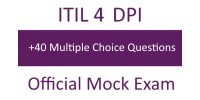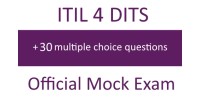When you attend an ITIL 4 course, you’ll find yourself among peers where you can learn almost as much as you do from the course itself.
Similarly, building communities of practice among people once they’ve certified can help develop a mix of blended approaches to service management. This is something I’ve been working on for the past three years and it has improved engagement, transfer of skills and interchanging of roles.
And it’s a very different picture from when I first certified in ITIL.
After studying ITIL v2, I carried the book around with me and applied the concepts by the book. The reason I, and others I knew, did it this way was through misunderstanding the way ITIL should be applied (i.e., not by the book, but in a way unique to your environment).
Unfortunately, at that time, there weren’t many people around me with whom I could discuss these issues, question my thinking, and interrogate the way I was applying the knowledge. Taking it literally, as happened in numerous organizations, led to levels of governance that could stifle innovation in the name of stopping things breaking.
This tendency, in some scenarios, to misapply ITIL also led to organizations becoming frustrated and switching to another framework or method like DevOps. However, this only exchanged one set of issues for another. In the case of DevOps, that could mean maximising speed but losing governance.
So, how – instead – can service management practitioners and the companies they work for benefit from blended approaches? First, it needs an open mind to the evolution of ideas in ITIL 4.
ITIL 4 – taking a fresh look at service management
When I want people who may be sceptical to look again at ITIL, I explain how ITIL 4 is designed to reduce critical events while enabling innovation to provide what customers need.
For innovative people and teams who need to get things done in digital development, transformation and services, ITIL 4 allows them to focus on velocity of activity while achieving outcomes of value and preventing things from breaking. The concepts enable you to continually innovate and improve rather than fighting fires and dealing with unexpected problems and unhappy customers.
Of course, when you’re moving with velocity the likelihood of breaking things is priced in; but the key is to fail fast while failing safely.
The ITIL 4 Specialist: High-velocity IT module takes the learner through the characteristics of innovative, fast-moving organizations and demonstrates the need for velocity, but not just for the sake of it. Instead, the strategic direction and continual improvement that ITIL 4 offers – including engagement with partners and vendors – means you can fail fast without affecting the rest of the ecosystem around you.
Once people understand how ITIL 4 applies in modern, digital organizations the next step is applying it in practice.
Co-creating value through practice communities
With the right training, learning and career paths in place, companies can enable their employees – starting with Foundation-level certifications – to apply what they learn away from the heat of a priority one incident.
From speaking with industry peers – including those working in Agile and DevOps – I know there are wider conversations happening today about collaborative working; understanding where problems are arising across stages such as design and transition and taking a holistic approach to applying principles and finding solutions.
By forming communities of practice – with structured learning – organizations can help people follow different pathways. That might include modules such ITIL 4 Specialist: High-velocity IT, or the latest extension modules, Sustainability in Digital & IT and Acquiring & Managing Cloud Services. Post-training, they can share their learnings and start to cross-pollinate knowledge.
This is about retaining the digital and IT service management “tribes” but also creating a unified community based on different streams of knowledge that understands the importance of focusing on value – the first ITIL 4 principle – and generates conversation about how to blend multiple best practices.
Source: https://www.axelos.com/resource-hub | Author David Barrow –Enterprise Service Management Consultant







